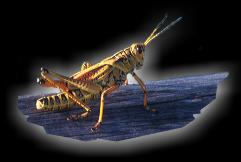Estonia
Kadriorg Palace
 |
Kadriorg Palace is a Petrine Baroque palace built for Catherine I of Russia by Peter the Great. Both the Estonian and the German name for the palace means "Catherine's valley". It was built after the Great Northern War. The palace currently houses the Kadriorg Art Museum, a branch of the Art Museum of Estonia, displaying foreign art from the 16th to 20th centuries.
After the successful siege of Tallinn during the final phase of the Great Northern War in 1710 czar Peter the Great of Russia bought a small Dutch-style manor house at Lasnamäe for his wife Catherine. However, plans for a larger palace in the area soon developed and construction of a new palace, Kadriorg, was started on 25 July 1718. Peter and Catherine visited the unfinished residence on several occasions, but after the emperor's death in 1725 Catherine showed no interest in the seaside property. The great hall with Catherine's initials and profuse stucco decor survives, while many other interiors have been altered.
After the death of Peter the Great, the palace received little attention from the Russian royal family. It was sporadically visited, by the empress Elisabeth and Catherine the Great. In 1828-1830 extensive restoration works of the palace and grounds took place. Between 1741 and 1917, the palace also housed the civilian governor of the Governorate of Estonia.
After the declaration of independence of Estonia in 1919, the palace became state property. For a time, one of the wings housed the studio of sculptor August Weizenberg while the palace was used for art exhibitions. Between 1921 and 1928 the palace housed what would eventually develop into the Art Museum of Estonia (see below), but in connection with a state visit by the Swedish king Gustaf V of Sweden, the palace was turned into a summer residence for the head of state. In 1934 the palace became the official residence of the first President of Estonia, Konstantin Päts who embarked on extensive and controversial restoration works with the aim of transforming the park and the palace into his private domain.
The palace became the main site for the Art Museum of Estonia in 1921. The museum was re-housed in temporary locations from 1929 while the palace was being converted into the Estonian president's residence. During the German occupation of Estonia during World War II, the palace was the residence of the civilian governor of occupied Estonia. After 1944, during the Soviet occupation of Estonia, the palace once more served as the main venue for the Art Museum of Estonia although the buildings were neglected and by the time of the restoration of Estonia's independence in 1991, completely run down. Restoration works, supported by the government of Sweden, began in 1991 and the palace re-opened in 2000. The restored palace no longer serves as the main building of the art museum, but as a branch displaying the museum's collection of foreign art.
